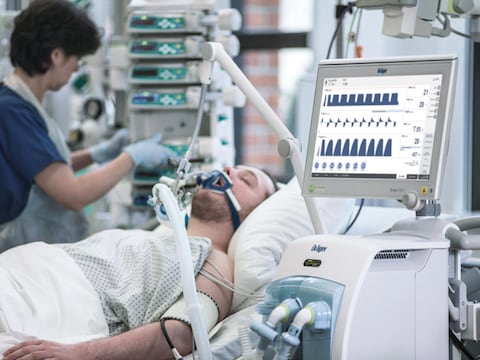By: Prof. Andreas Valentin, MD, MBA
Published: ICU Management & Practice – Volume 16, Issue 2
Date: 2016
Risk Assessment and Safety Status of Transports
Although the number of publications in this field is increasing it remains difficult to come up with representative numbers. The reasons for this difficulty consist of different definitions of error, different types of transport (e.g. intrahospital and interhospital), and very frequently the missing information about the number of opportunities for error and the actual error (numerator and denominator). In a study on 184 mechanically ventilated ICU patients requiring 262 transports for CT, 26% of transports were associated with an adverse event affecting the patient (Parmentier-Decrucq et al. 2013). Interhospital transports carry a particular risk regarding the safe functioning of transport equipment. In a Dutch study involving 353 interhospital transports, 55 technical problems were encountered, ranging from problems with the gas supply and electricity to problems with the medical equipment and the trolleys, as well as with some functions of the ambulance car. Although there was only little impact on patient status, these problems led to delays or even cancellation of patient transports. In any case this study highlights the particular dependence on technical equipment during a period when the relatively safe environment of a hospital is left with a critically ill patient on board (Droogh et al. 2012).
Patient safety is not only a matter for the transport period; a transport might impact the patient status beyond arrival on or return to the ICU. In a French study it was shown that intrahospital transport increases the risk for complications in ventilated critically ill patients. Patients exposed to a transport had a higher risk for various complications including pneumothorax, atelectasis, ventilator-associated pneumonia, hypoglycaemia, hyperglycaemia, and hypernatraemia (Schwebel et al. 2013). The latter findings illustrate that the interruption of critical care processes like the continuous administration of medication might lead to pathophysiological derangements if no proper and time-sensitive adaption is performed.
An important question concerns the composition of the transport team. While it seems intuitively most likely that a dedicated transport team should be advantageous there are few data supporting this assumption. In a Scottish study on interhospital transfers of acutely ill patients the incidence of unsecured medical equipment and equipment failures in ventilated patients was significantly lower in dedicated transport teams (Fried et al. 2010). Obviously ventilated patients are to be considered as a group with increased risk during any kind of transport and a clear demand for skilled accompanying medical staff. To illustrate this point an example of a patient with decreasing oxygen saturation might be helpful. The causes for a decreasing oxygen saturation might be trivial like the loss of the signal due to the displacement of the oxygen sensor, but could also be attributed to a life-threatening event like airway obstruction or pneumothorax, as well as technical problems like the breakdown of gas supply or defect hoses and valves, just to mention a few. It goes without saying that the fast and accurate workup and solution of this event will be much more challenging with a patient on the move, either on the street or in the air.
Setting & Equipment
As elaborated above the choice, maintenance and proper handling of equipment is a crucial factor in preventing critical events during transport. One of the paradigms in safety research is about system design and the risk of an environment and equipment that might rather promote than prevent the occurrence of error. It is therefore of uppermost importance to choose transport equipment that is built with a user-friendly and error-mitigating design. The user-machine interface makes a difference, as has been shown in a study on different types of transport ventilators (Templier et al. 2007). For intrahospital transports the ICU equipment already in use in a particular patient should be used as much as possible for the transport as well. There are many ICU ventilators available that will be applicable during transport, for example. Alternatively some transport ventilators will provide the exact similar ventilator mode as used with a particular ICU ventilator.
The placement of equipment during a transport should allow unhindered access to the patient, while at the same time patient safety must not be compromised by an insecurely stowed monitor, ventilator, perfusion pump etc. In most cases equipment is best mounted at or below the level of the patient, but the display of the monitor, ventilator and other devices must be visible and alarms should be as audible as possible.
At least for gas supply and power supply redundancy must be a principle. Calculations must consider unplanned delays during a transport and other scenarios like a higher demand for oxygen in a deteriorating patient.
Source: https://healthmanagement.org/c/icu/issuearticle/safe-transport-of-critically-ill-patients
Image: https://www.draeger.com/Library/Media/draeger-evita800-ventilation-4-3-D-2664-2019.jpg?imwidth=480
Analysis:
The importance of this article mentions the significance of ventilators and their ability to achieve a ‘user-friendly’ machine/interface for the purpose of enabling the associated nurses to clearly see the information being displayed. In addition to, the location in which the machine is located should advocate for an unhindered access that not only targets the occurrences of the machine falling onto the floor but the patient as well. To combine these elements would significantly reduce the amount of potential complications during transport. Therefore, the opportunity presented suggests the way in which the machine’s user-interface is displayed and the location that would be designated for the machine when in transport.




